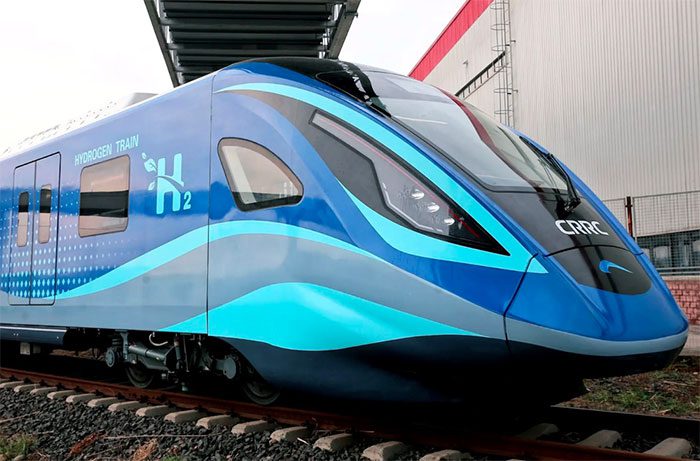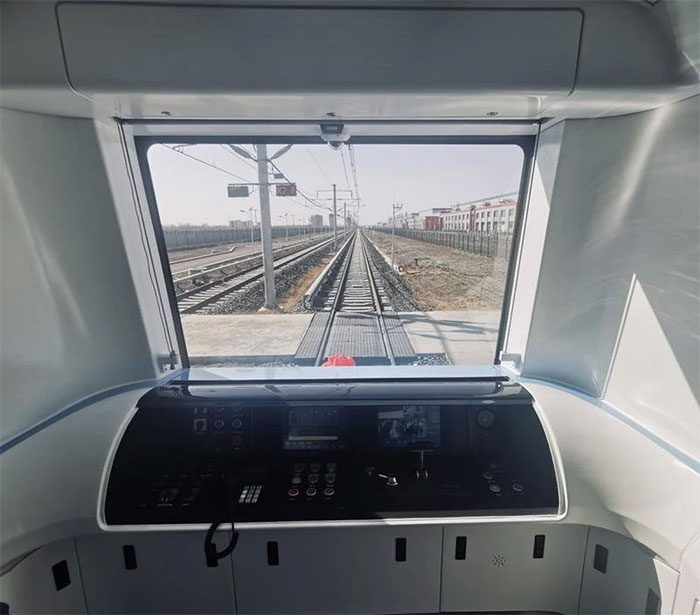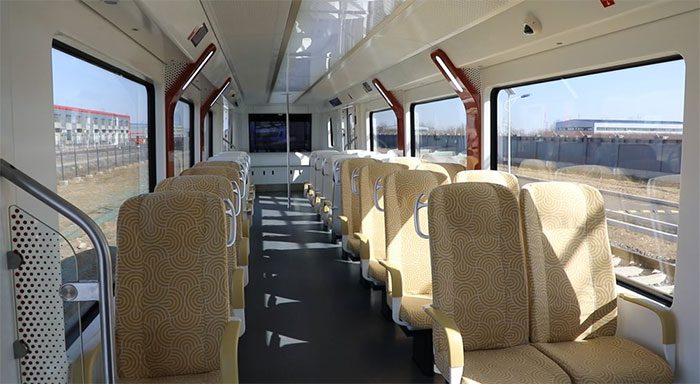According to the developer, this train can reach speeds of 160 km/h and has a capacity of 236 passengers, equipped with many modern technologies.
As reported by New Atlas, Hebei Jingche Rail Transit Vehicle Equipment Co., the world’s largest railway vehicle manufacturer, has launched an emission-free train powered by hydrogen fuel cells with supercapacitor buffers. This train was “unveiled” in Baoding city, Hebei province, last weekend.
This train consists of 4 carriages, capable of achieving speeds of up to 160 km/h, making it the fastest hybrid train to date. Developed in collaboration with CRRC Group and Chengdu Rail Transit, this is the first hybrid passenger train in China, with an operational range of 600 km and zero emissions. Notably, the train is also capable of self-driving, equipped with 5G connectivity, able to restart after a rest mode, move and stop, as well as return to default mode.
According to Zhang Hong, deputy general director of the Jingtou Railway Transport Technology Research Institute in Beijing, the developer of this train, the vehicle uses hydrogen fuel cells as its primary energy source, which can be fully charged in 15 minutes for a range of under 100 km.

This is the first hybrid passenger train in China
Additionally, another energy source used by the train is lithium batteries. Zhang added that the train could help reduce carbon emissions by about 40 tons per year and only emits pure water, with no other emissions, achieving zero emissions.
Currently, Germany is leading in this field, with around 14 Alstom hydrogen-powered trains operational as of last year. Meanwhile, CRRC’s train is capable of running approximately 20 km/h faster, but German trains have a greater operational range of 1,000 km.
China Daily reports that the Chinese train can recover kinetic energy, utilizing the energy generated when the train brakes to recharge lithium batteries, along with harnessing heat produced by the hydrogen fuel cells to warm the air in winter, significantly saving energy.
Moreover, the train is equipped with various new technologies, such as articulated switch gears and elastic wheels. These features will significantly reduce noise, providing a quieter experience for passengers.


The new hybrid train has a maximum capacity of 236 people.
Compared to conventional electric trains, the new hybrid train has a narrower carriage width, with seats arranged for 3 passengers per row. The maximum capacity of the train is 236 people. In the future, this fully autonomous vehicle is intended for use at airports, moving in suburban areas or scenic spots.
Qian Zhaoyong, General Director of Hebei Jingche Railway Vehicle Equipment Company, stated that this is a model “developed in Beijing and manufactured in Hebei”, a collaborative development achievement of the Beijing-Tianjin-Hebei region.
While Japan and South Korea are the most vocal advocates for hydrogen-powered transportation, the latest data shows that China is leading in the deployment of hydrogen fuel stations. According to Information Trends, there are just over 1,000 hydrogen stations in the world, with about one-third of them located in China.
New Atlas considers this a significant step for a country that holds a major advantage in the lithium battery supply chain, quietly “expanding” into the hydrogen energy sector. The tightening supply of lithium resources is likely to drive up the price of this material and greatly impact the green transition revolution. Therefore, promoting hydrogen-related alternative solutions seems to be a prudent and timely move.


















































